Pichler & Traupmann Architects
Mario Gasser
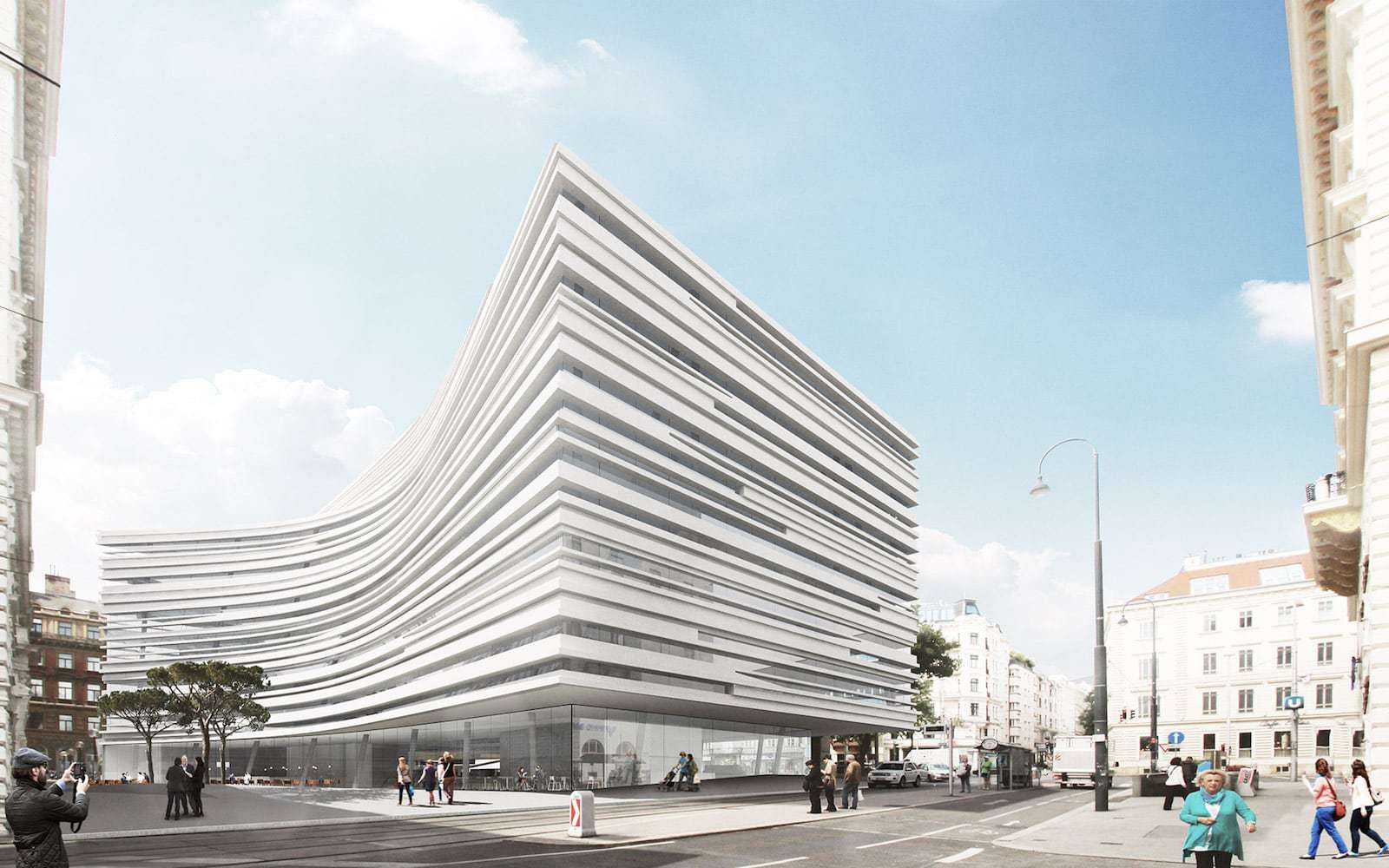
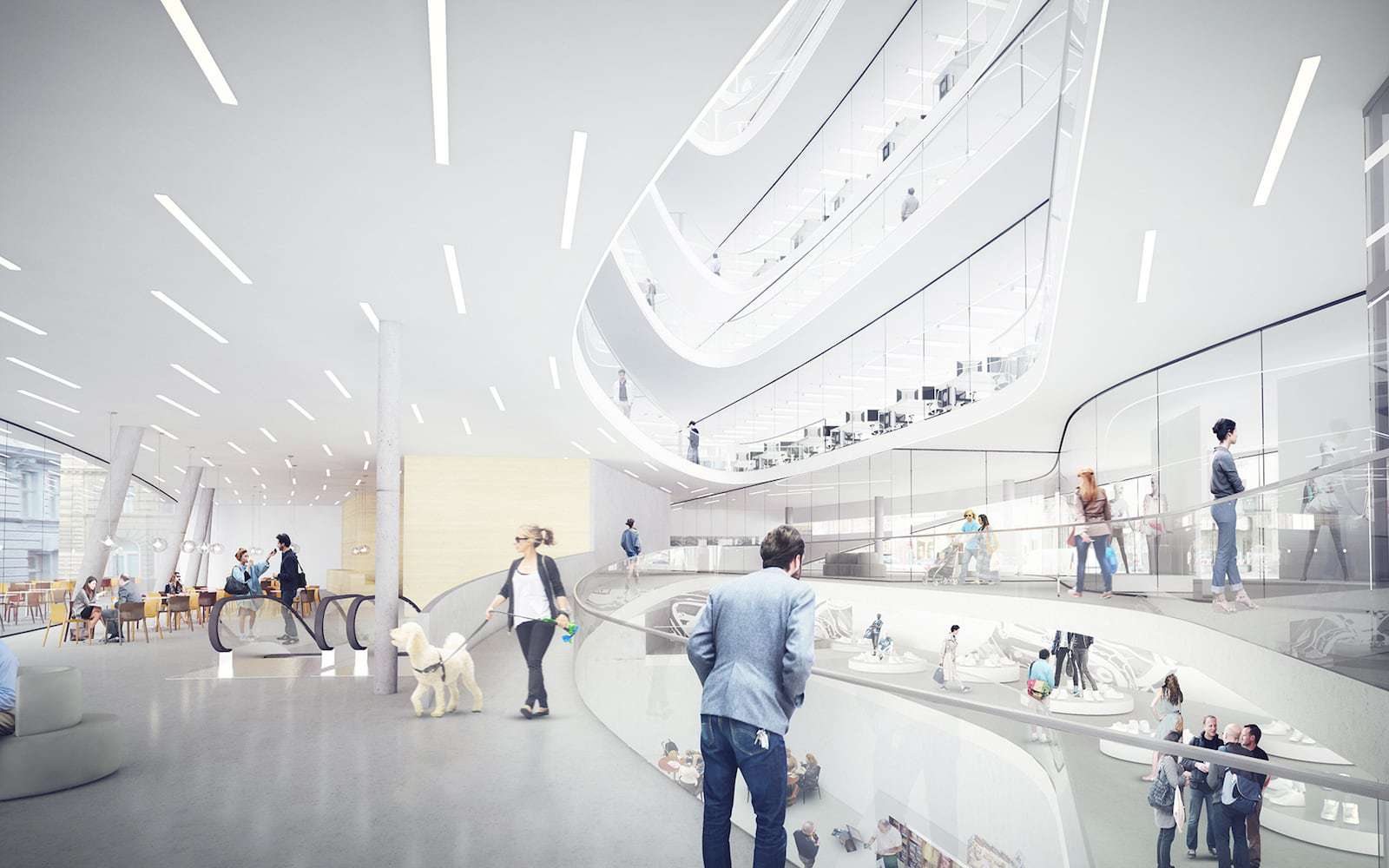
The theme of a new building in the area around the Rathaus (City Hall) is positioned in a field of tension between two possibilities: either accepting the rules that shaped these surroundings and employing them, or rejecting them as outdated and breaking away from them.
2013
Vienna
Competition
Work
13,200 m²
Year |
Venue |
State |
Category |
Size |
|---|---|---|---|---|
2013 |
Vienna |
Competition |
Work |
13,200 m² |
Year
2013
Venue
Vienna
State
Competition
Category
Work
Size
13,200 m²
We believe, however, that it is possible to reconcile these two apparent opposites. First of all we see no reason to offer here a striking volumetric formulation, above all in terms of height. The genius loci for such a solution, not to mention a brief that might require such an approach, is simply lacking here. Nevertheless, one can search for freedoms that are revealed within such strongly defined existing conditions and one can provide improvements in terms of both urban space and the typology of the new building required. In a further development of this kind it is most important to consider the outdoor space: on the one hand the triangular-shaped area leading in the direction of the Josefstadt, on the other the space at the end of Rathausstraße. The aim to newly articulate and define the latter was the decisive step that led to new levels of freedom in the project.
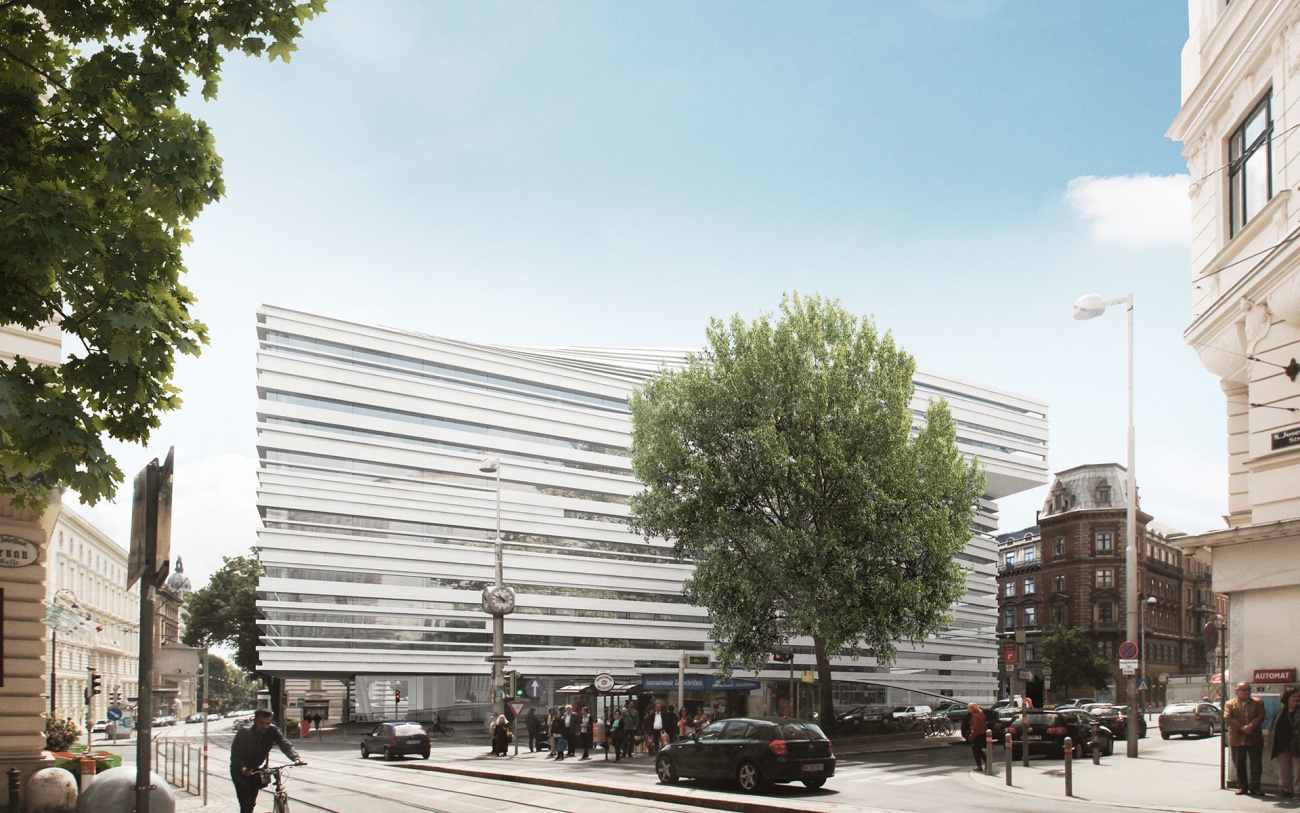
The present project thus reflects the given situation in several aspects, both in relation to the historical setting and in relation to the development that now exists.
A building is created that, while offering a high degree of complexity, is still articulated in a clearly understandable way and which, in a certain sense, takes a playful approach to engaging in a dialogue with the surrounding block structures and their roofscapes. Each of a number of intellectually separate and individual models is transformed by the next step and then finally placed together to create a fully formulated overall composition. Here the external form is just as influential as the logic of the internal functions.
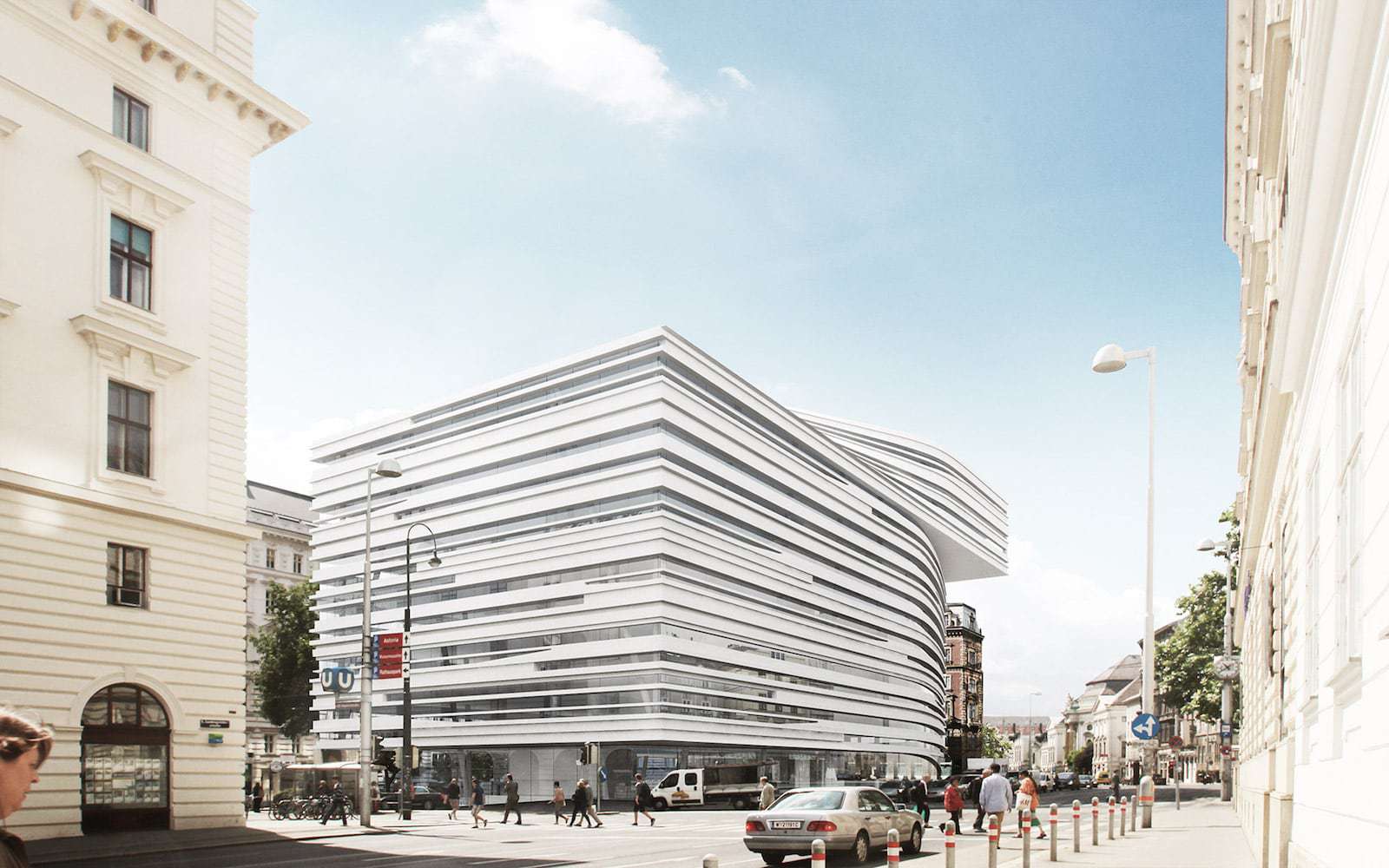
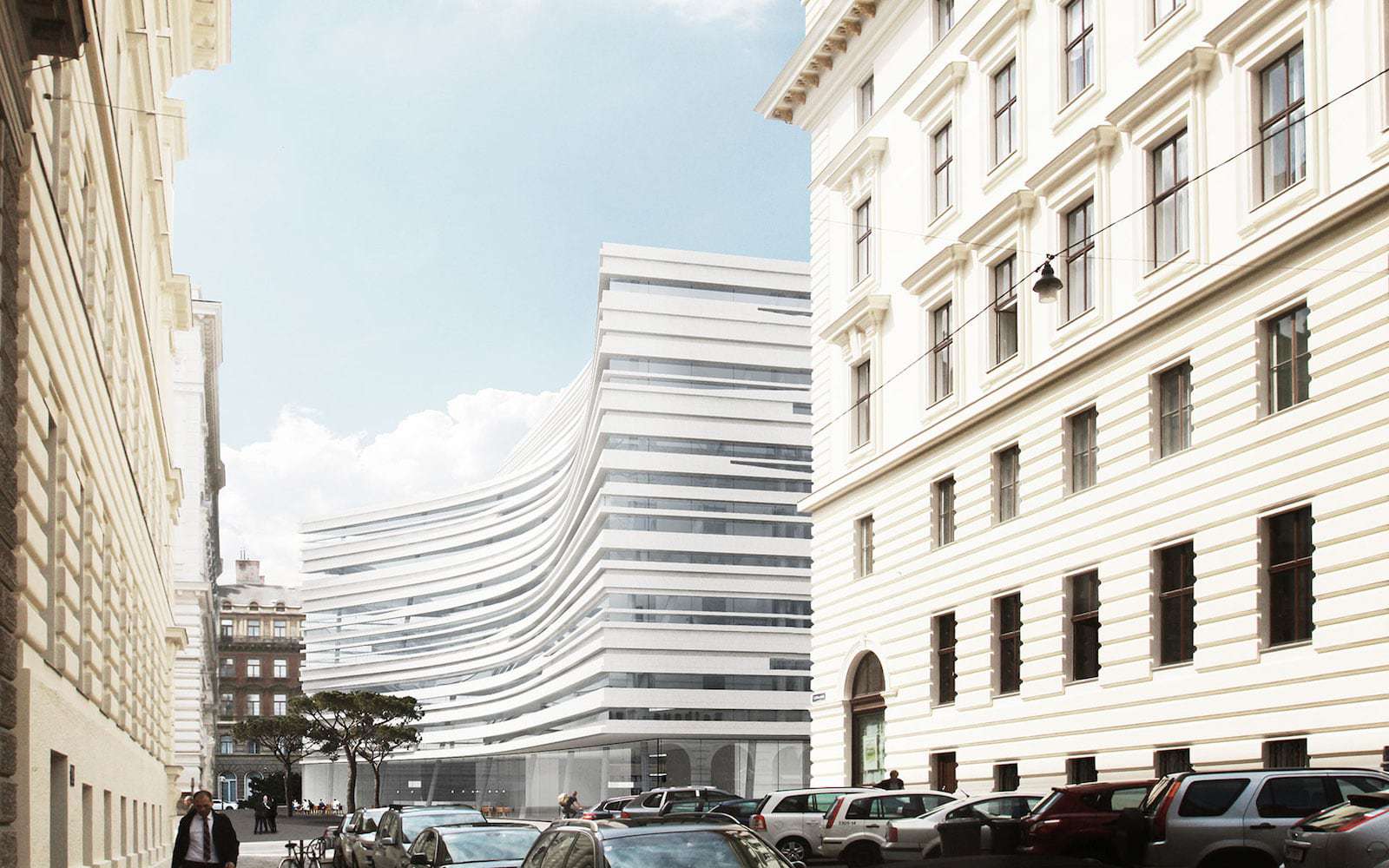
The prevailing block perimeter system in the Rathaus area is recreated along Auerspergstraße. The continuation of the edge along Landesgerichtstraße meets the line of Auerspergstraße exactly at the junction with Doblhoffgasse in order to take up the basic geometry once again.
Similarly, the line of Stadiongasse is restored. The currently “messy” connection to Josefstädter Straße is abandoned in favour of a clearly articulated and historically correct “joint” situation. However, these restorations of the original lines require counteracting measures in the three-dimensional shaping of the volume, on the one hand to prevent any sense of dogmatic severity, on the other in order to respond to the situation that has developed over the course of time (the directions of traffic) and new projected situations (building heights).
The building projects out over the existing pavement on Stadiongasse so as to form the necessary urban edge while not hindering the flow of traffic and movement. However the prescribed eaves height of 26 metres is demonstratively observed.
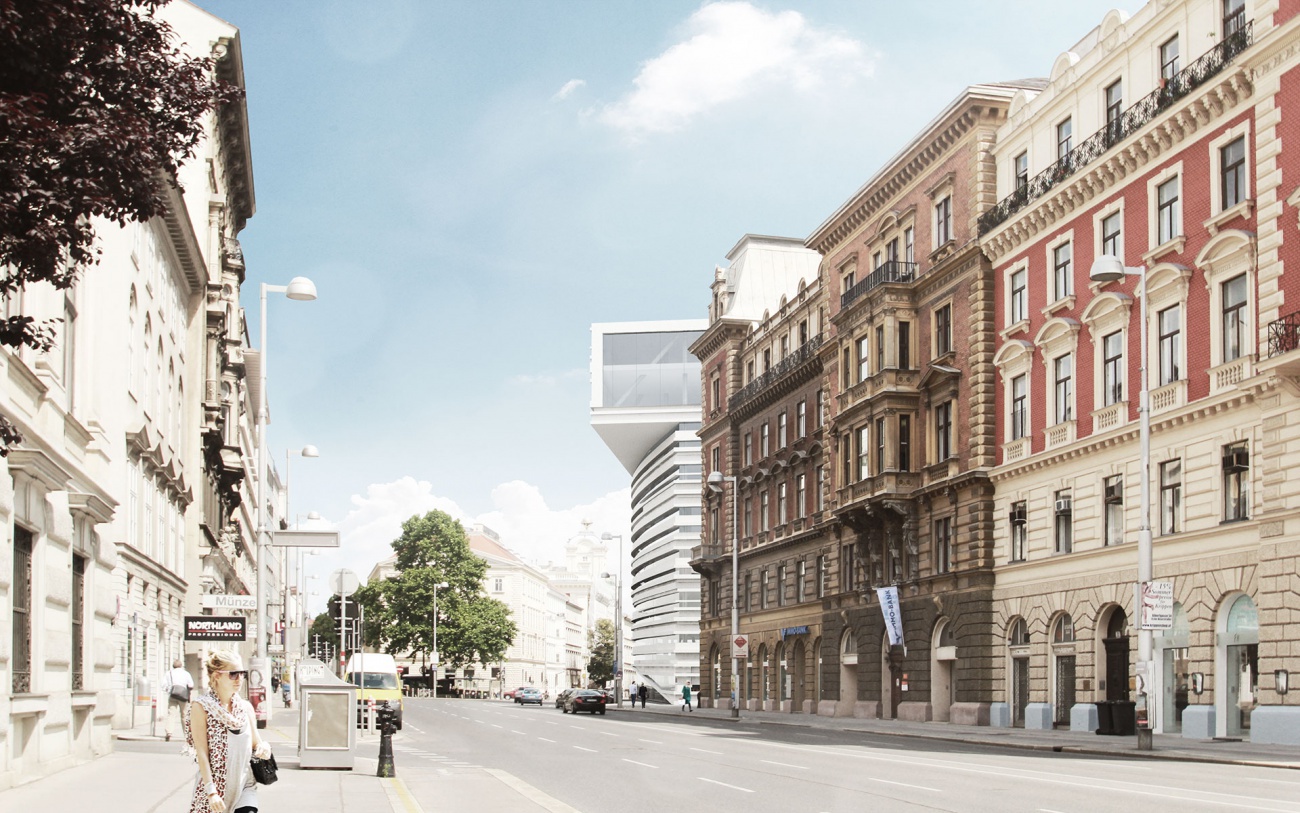
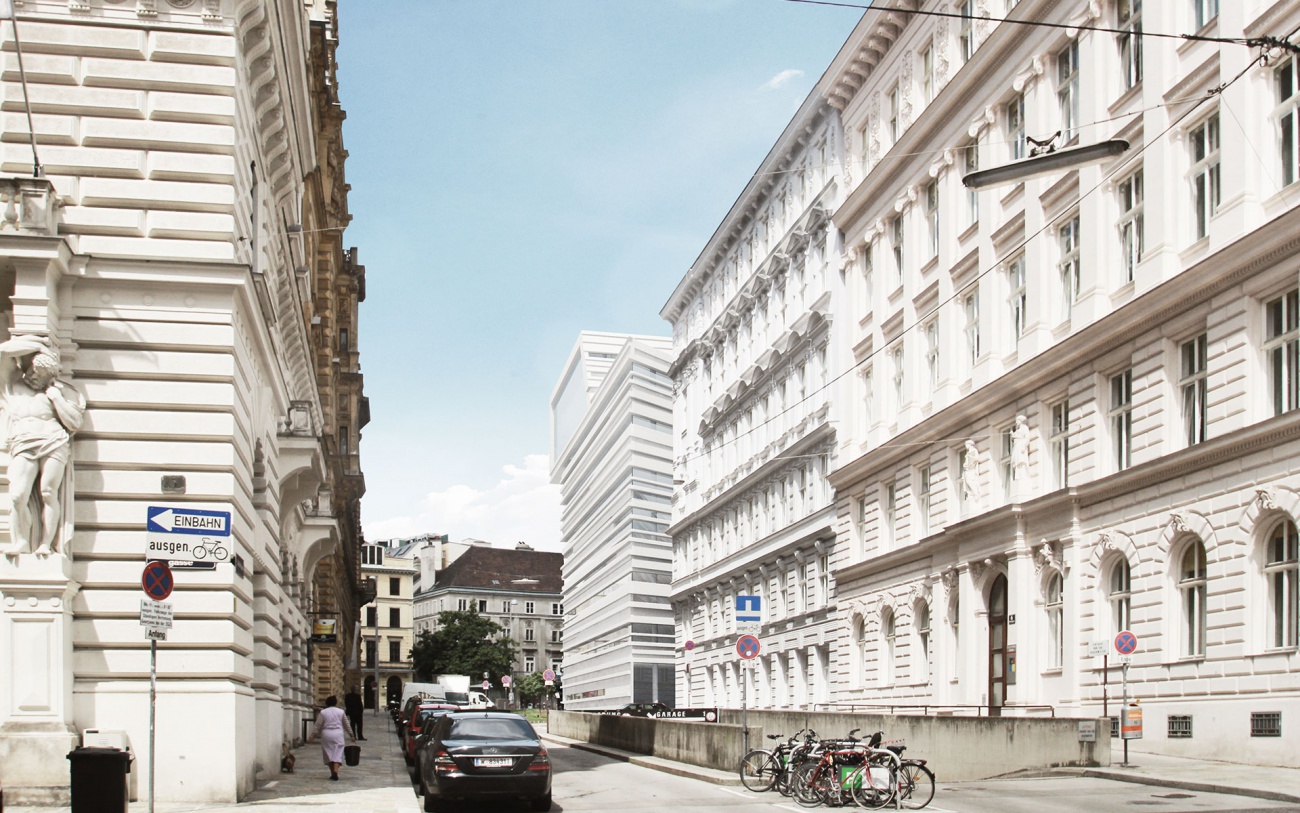
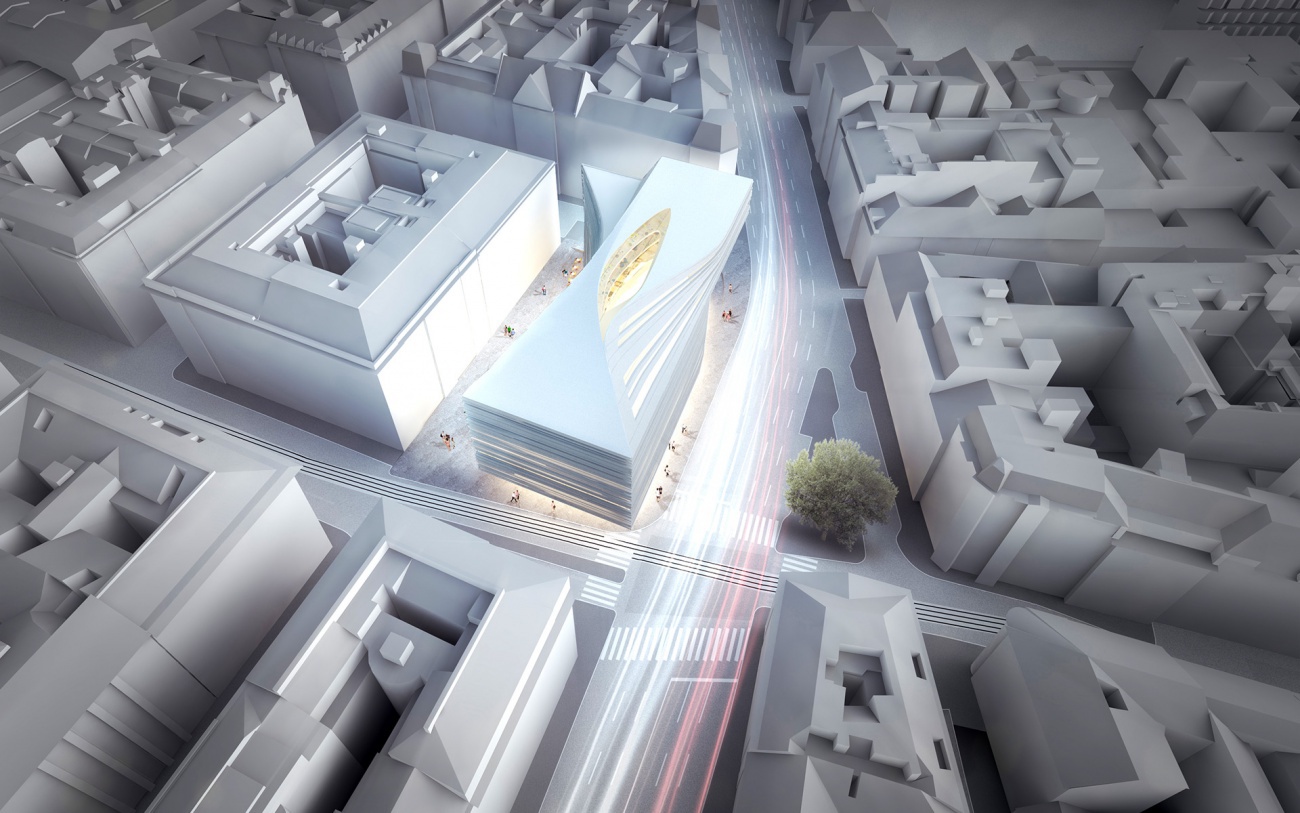
The strategy of projecting and withdrawing on Rathausstraße is a further important idea. The aim is to terminate this street, which used to come to a dead-end here, by means of a square that also leades into the building in a self-evident way. In addition an effort is also made to develop a considerably more slender building than previously with regard to the buildings opposite and to compensate for the loss in floor area by increasing the floor area along Doblhoffgasse. Here use is made of the fact that the buildings opposite are also owned by the City of Vienna, making it unlikely that any objections will be raised in the approval process to departing from the street width suggested by the relevant building class. Naturally, the angles of incidence of light required by the building regulations are adhered to but are interpreted creatively to make an acute-angled end to the new building that comes unusually close to the building opposite and yet deprives it of none of the necessary light.
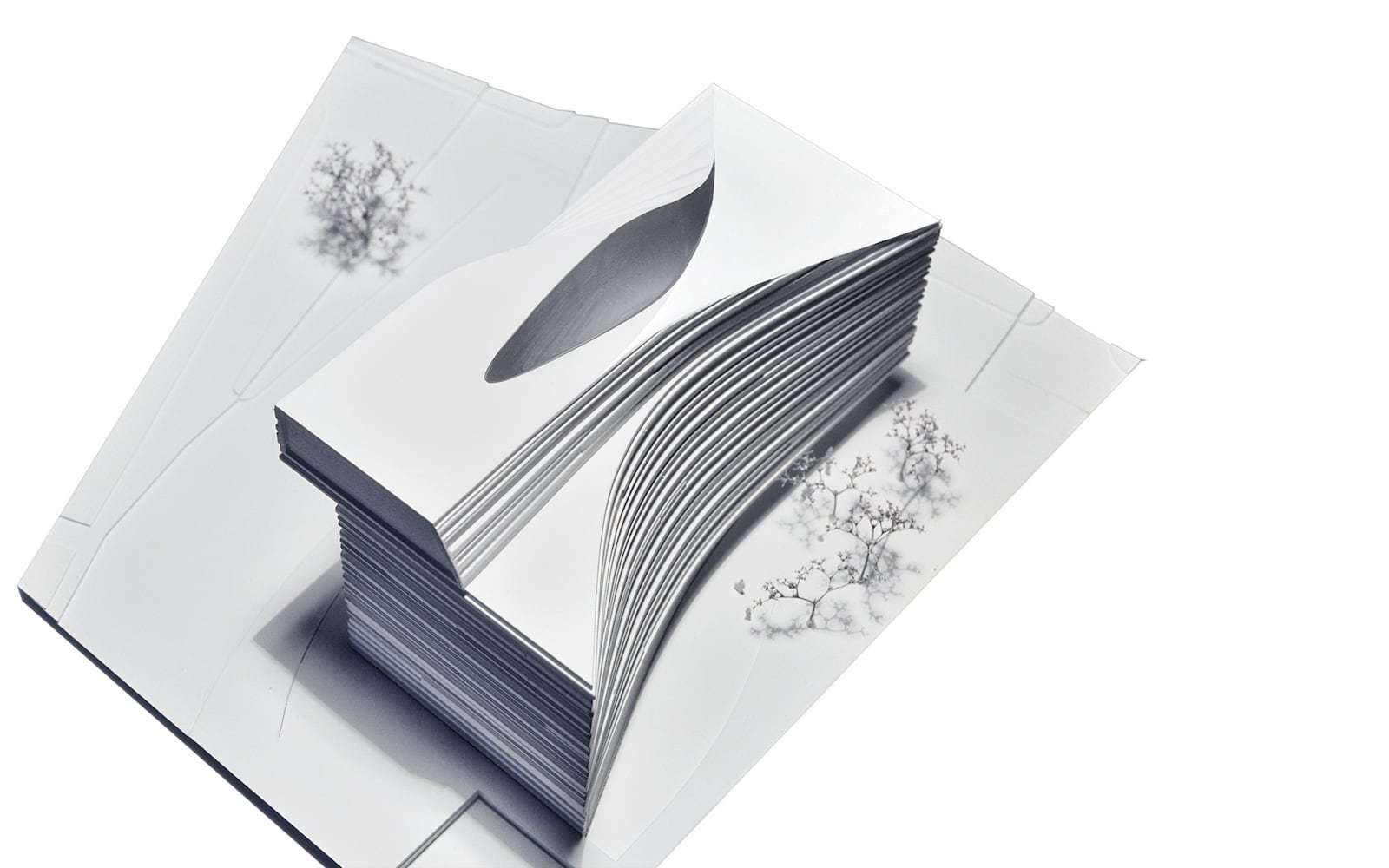
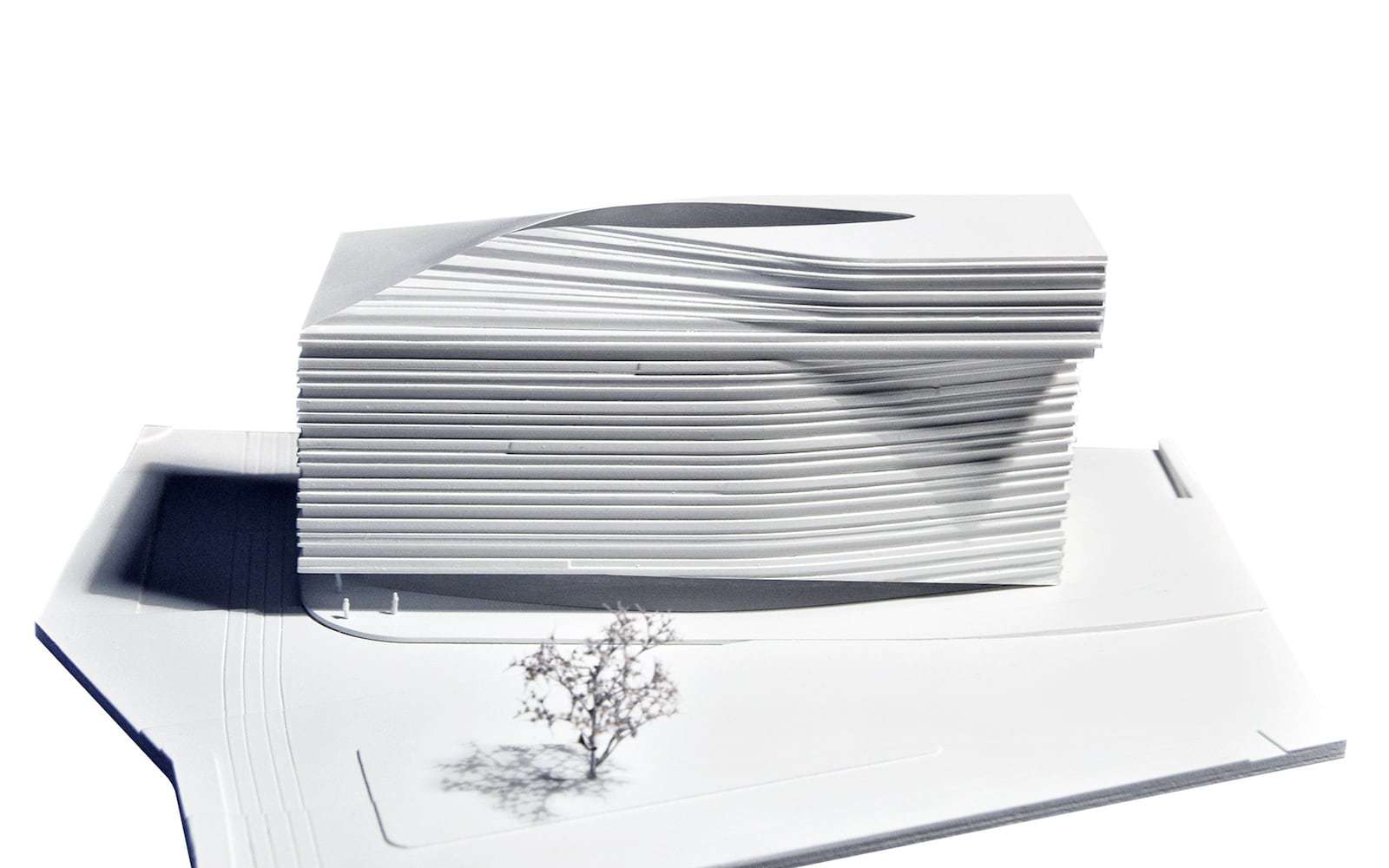
This principle could, of course, be used at several places, certainly at the other corners of the building. However the project avoids doing this and instead orients itself more to the buildings opposite on Stadiongasse. These two constraints result in a curved façade with a topology that also introduces the topology of the roof figure. Ultimately this blends in a self-evident way into the existing roofscape and becomes a contemporary interpretation of the historic roof forms.
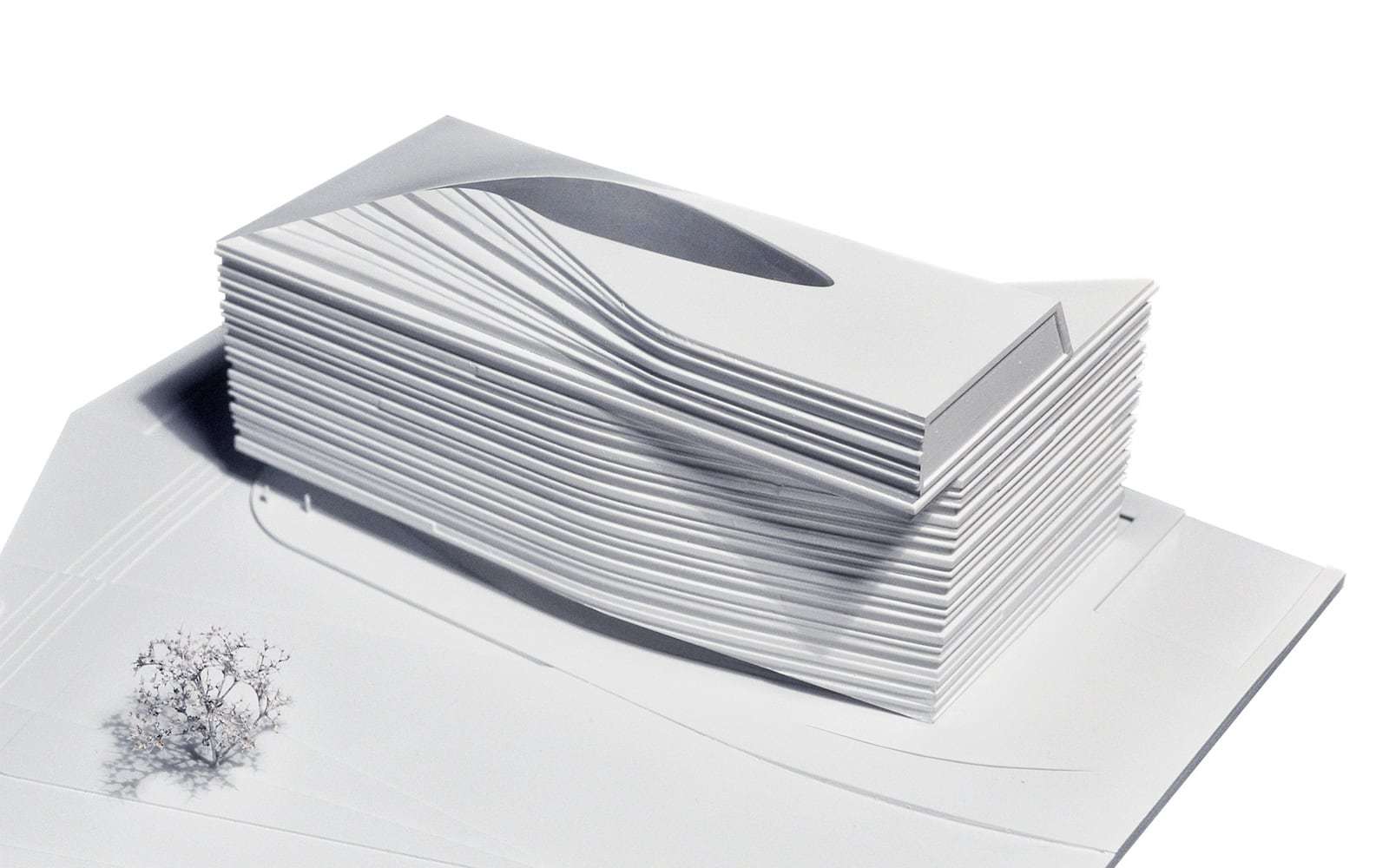
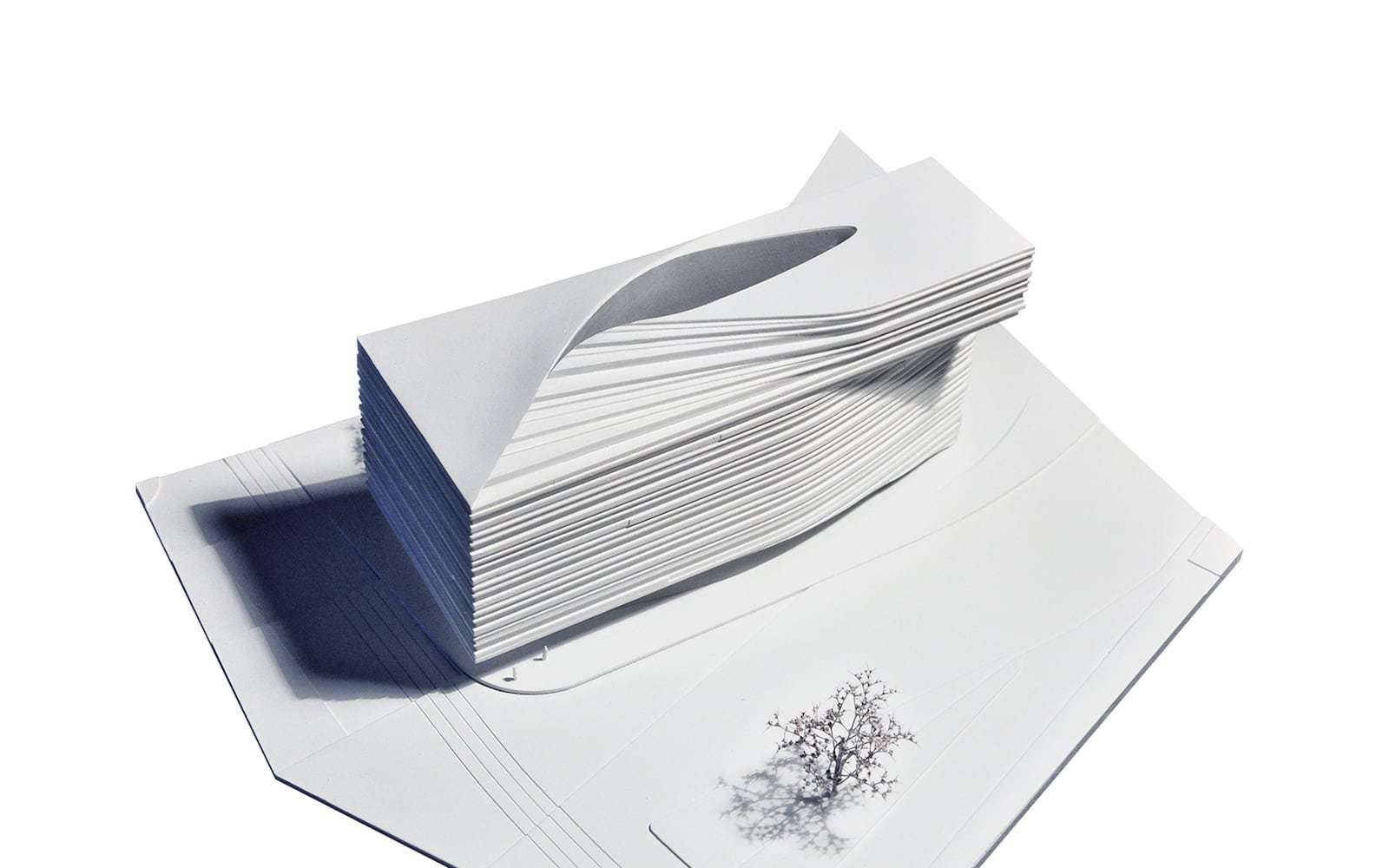
The façade is seen as a new interpretation of the principle of relief as used in 19th century buildings, which reached a high point around the time the Rathaus district was erected. Naturally, the tectonics of vertically oriented windows and their surrounds and the hierarchical articulation into plinth, central and roof zone are not repeated, instead a layering made up of strips is employed that is economic in energy terms and, provides work and office landscapes free from glare as required for modern-day computer workplaces. This layering is strongly emphasised – also as a way of providing shade – and is intended to engage in a dialogue in terms of depth and grain with the decoration of the 19th century facades, which was originally was also developed for functional reasons – for instance as a way of protecting the facades.
Pichler & Traupmann Architects
Mario Gasser
Sabrina Miletich
Bence Pap
Wolfgang Windt
Wien Holding GmbH, Vienna
Bollinger - Grohmann - Schneider ZT GmbH, Vienna
Norbert Rabl ZT GmbH, Graz
DI Roland Barthofer, Vienna
Start of planning: 2013
Usable Floor area: 13.200 m²
Location: 1st district of Vienna, AT
Function: Office building
Scope: EU-wide, open, double-stage, anonymous competition preceded by announcement
Harald Schmidt, Vienna
expressiv.at
2nd prize